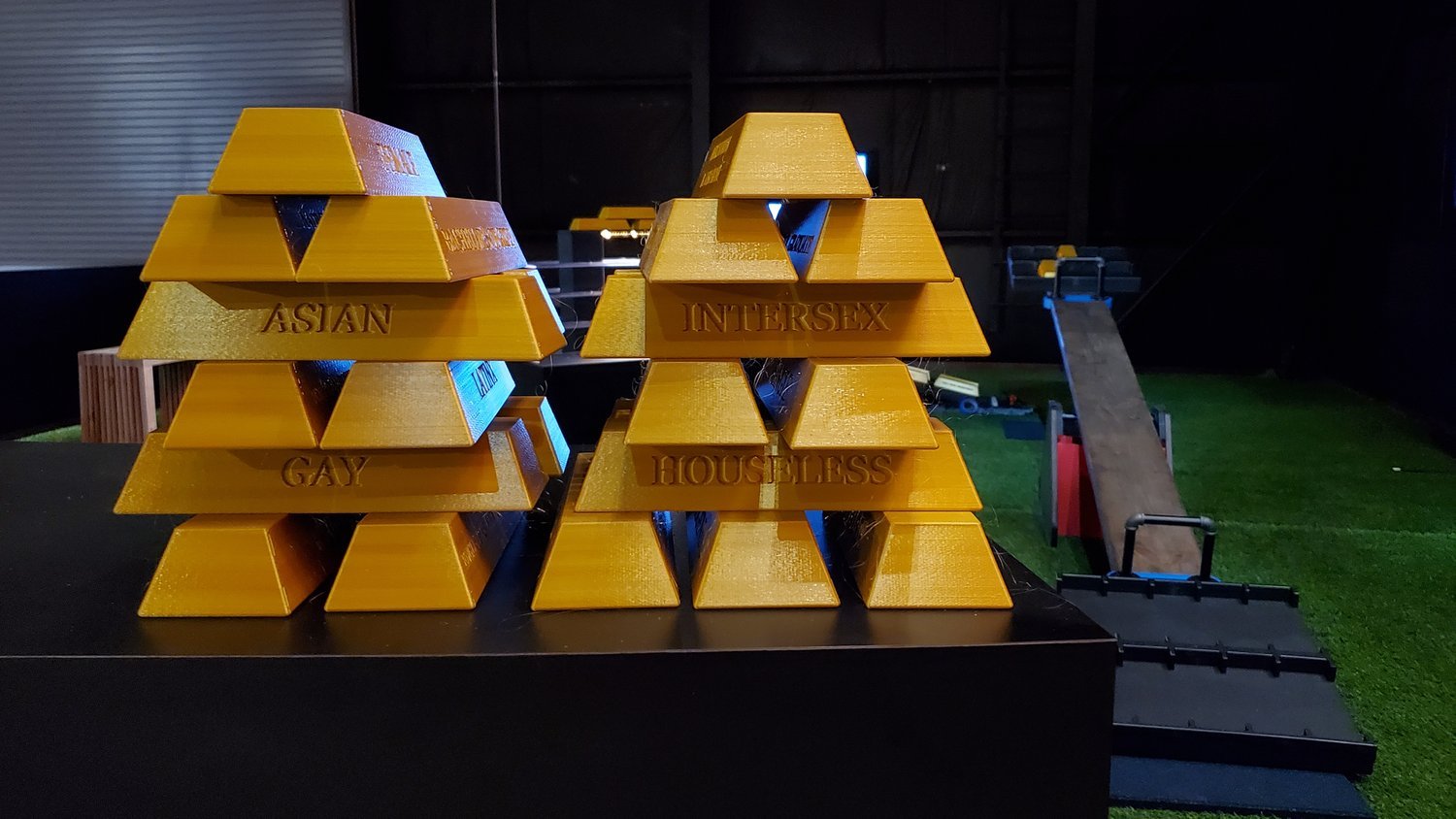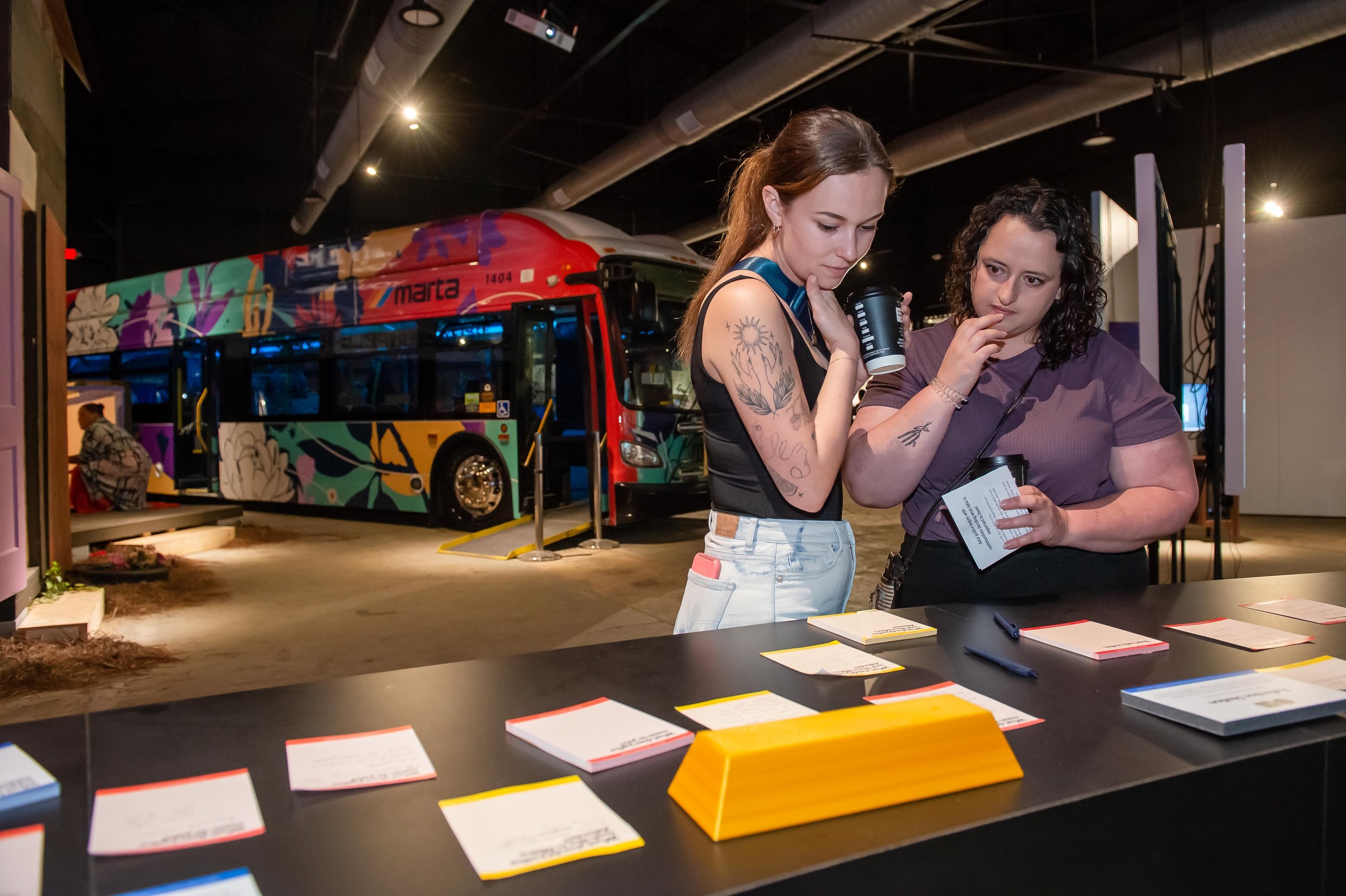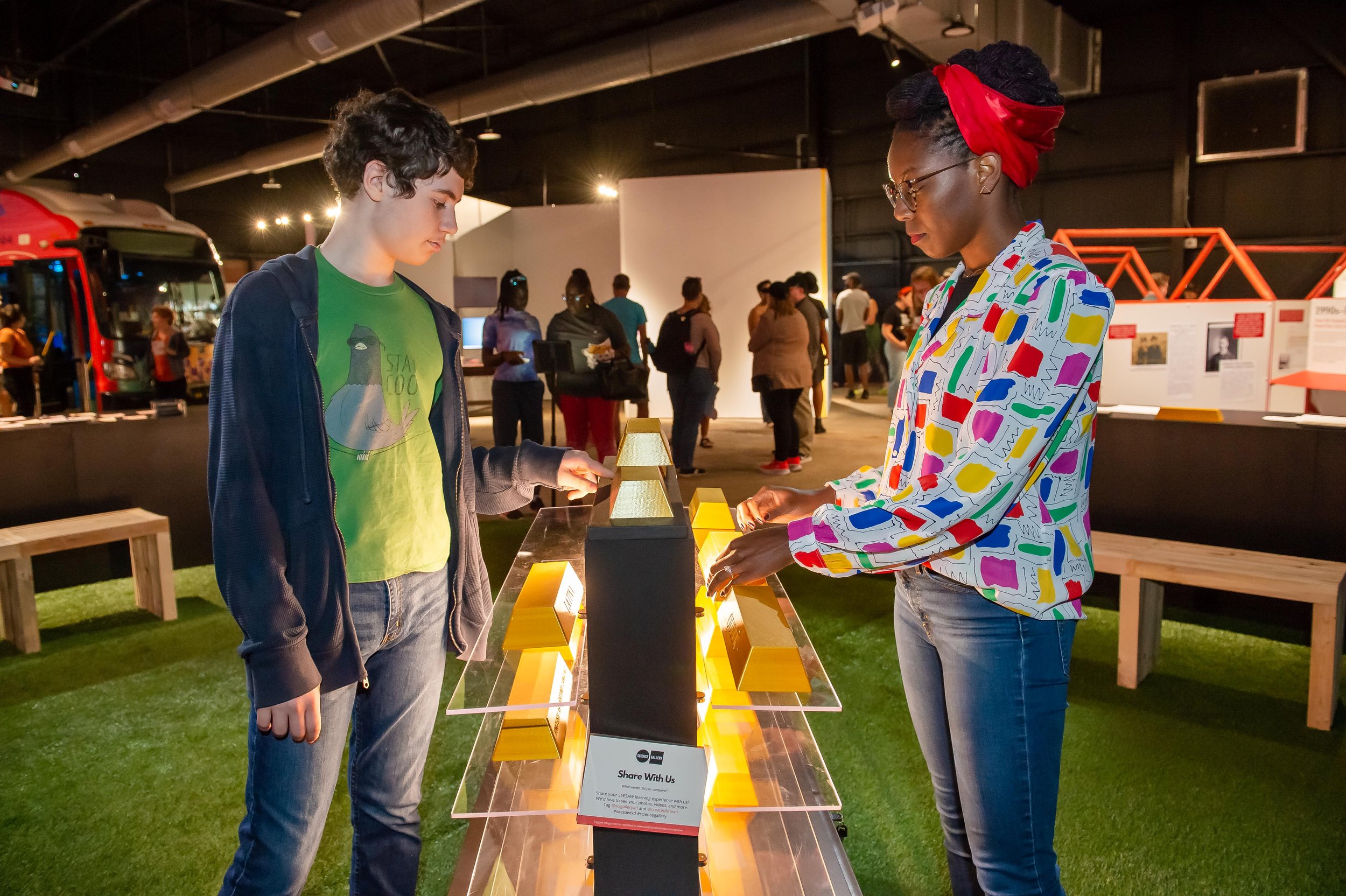SEESAW by Stephanie Brown
By placing different gold bricks, visitors are invited to balance the seesaw and engage in questions of identity, empathy, and justice.
Some visitors experience SEESAW by Stephanie Brown in Science Gallery Atlanta’s JUSTICE (Bita Honarvar, 2023)
When photographer and mixed media artist Stephanie Brown first designed the playground that would become “SEESAW,” an evocative life-sized installation on exhibit now at Science Gallery Atlanta, she wasn’t sure how people would react.
“SEESAW” invites gallery-goers to walk through what initially looks and feels like a traditional children’s playground. Visitors can sit on park benches, walk on imitation grass, and explore the seesaw at the exhibit’s center. But Brown asks viewers to do more than observe. She also wants them to participate. Would they be willing?
The answer, it turns out, is yes.
Throughout “SEESAW,” on display now through September 30 at Pratt-Pullman Yards in Atlanta, visitors follow cues and creative prompts to engage questions of identity, empathy, and justice. Want to balance the seesaw? You’ll have to place gold bricks on it first—and each brick is differently weighted, depending on its label: “Houseless,” “Highschool Graduate,” “Female,” “Gay,” and “Asian” are just a few of the possibilities. Want to relax along the edge of the playground? You’ll find cards with key demographic statistics from the Atlanta Regional Commission and the US Census waiting for your reaction, along with questions that invite you to jot down your thoughts: What should justice look like in metro Atlanta?
SEESAW by Stephanie Brown in Science Gallery Atlanta’s JUSTICE (Stephanie Brown, 2023)
“Art is about learning and transformation, not just passive viewing. It’s also about justice.”
It’s an unsettling experience, going from the carefree nostalgia of a childhood playground to reminders of the harsh inequalities and systematic discrimination experienced by many in Atlanta. Brown says she wanted people to feel that dissonance, to come away from “SEESAW” both energized and uncomfortable.
“If art isn’t provoking a strong impact on the person engaged with it, it’s missing something,” she says. “Art is about learning and transformation, not just passive viewing. It’s also about justice.”
Stephanie Brown in her studio (Stephanie Brown Appleton Museum of Art, 2020)
A daughter of Jamaican immigrants, Brown is an expert in Learning Experience Design (LXD) within mixed-media and visual arts. She was an Arts and Social Justice Fellow at Emory in 2020 and has a background in curriculum writing, art education, and art administration. She creates human-centered experiential art installations that she hopes will stay with viewers long after they have left the gallery. She sees art as a moral endeavor and a pedagogical activity.
“When I create installations,” she says, “I’m interested in dissecting how people learn. It’s all about providing dynamic experiences where people can create understanding and meaning.”
As her website describes, Brown’s art “aims to decode the ways we construct our identities in a world full of both conscious and subconscious bias.” By decoding, she also seeks to empower people—to help them come away from an experience like SEESAW with a greater understanding of what different people experience.
“What experiences have you had that shape how justice looks like for you?”
Visitors are invited to follow cues and creative prompts to engage in questions of justice as part of SEESAW (Bita Hornavar, 2023)
“I came up with the idea for SEESAW during the pandemic,” Brown says. She percolated on the project for a couple of years, and when the Science Gallery team put out the call for applications to the JUSTICE exhibit, she stepped forward. “I knew immediately that this was the right fit,” she says. “I knew what I wanted to do would fit perfectly with the JUSTICE theme.”
The resulting installation embodies both Brown’s commitment to art as a teachable encounter and her belief that equity, justice, and identity are questions that must be picked up and explored—handled just like the gold bricks on the seesaw—to motivate people to create a fairer and more humane future for all.
“You start picking up gold bars that resonate with you or represent who you are,” she says, “and they might be lighter than you expected—or heavier. And that might rub you the wrong way. Why are some identities given more weight than others? What experiences have I had that shape how justice looks like for me?”
“At its heart, Science Gallery is about helping people learn and engage and change”
Artist Stephanie Brown and a visitor engage with SEESAW (Bita Hornavar, 2023)
While “SEESAW” is specifically designed to provoke conversation around identity within metro Atlanta, Brown’s installation has the capacity to expand far beyond one city. The playground is scalable and dynamic, with the capacity to be tailored to multiple cities and global audiences.
“I’m excited about leveraging learning experience design to teach others globally,” she says. “For me, art is a great way to connect with people. That’s why I love Science Gallery. At its heart, Science Gallery is about helping people learn and, engage and change. And that’s truly amazing.”





